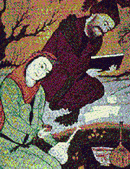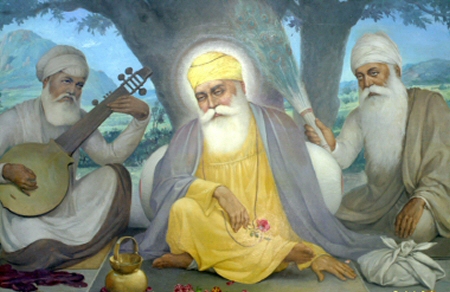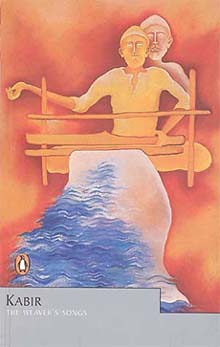SufismPlease View Sponsored Advertisements to Support this Site and Project
The Sufis, completely overturned Western misconceptions of Sufism, revealing a great spiritual and psychological tradition encompassing many of the world's greatest thinkers: Sadi, Attar, Rumi, Ibn El-Arabi, El-Ghazali, Omar Khayyam, Francis of Assisi and many others.If Sufism is an adventure, a goal of human perfection attained by reviewing and awakening within humanity a higher organ of fulfillment, completion, destiny, why is it so difficult to assess, to locate in time, to pin down? It is precisely because Sufism is carried out in every community and at every time that it has such diversity -- and this is one of its secrets.
In the last two decades many people have become aware that their capabilities for development and understanding are greater than they had previously thought. Sufi study provides a means for this development and an understanding of its meaning for the individual and for humanity as a whole.
The Sufis have been using carefully constructed stories for teaching purposes for thousands of years. Throughout his life Idries Shah (1924-1996), recognized as the foremost authority on contemporary Sufi education, wrote more than thirty books containing such teaching stories and narratives. Though on the surface these often appear to be little more than fairy or folk tales, the Sufis hold that they enshrine -- in their characters, plots and imagery -- patterns and relationships that nurture a part of the mind not reachable in more conventional ways, thus increasing our understanding, flexibility and breadth of vision. Familiarization with this body of material can eventually provide answers to questions about our origins and our destiny
"We have done all we can to embody as much of the teachership function as we can in the literature itself , largely we have been able to do this by excluding a lot of extraneous and external accretions ... We have been able to reconstitute the emphasis of the stories, so instead of their being instruments only to make you think how great the spiritual master is and how nothing you are, and how wonderful the possibilities of the situation are, we have retrieved the dynamic of the stories in order to show aside from those things what is possible ... what is called in some disciplines enlightenment, can be in the Sufi process, the result of the falling into place of a large number of small impacts and perceptions (from these stories and one's own experiences) producing insights when the individual is ready for them."
"We view Sufism not as an ideology that molds people to the right way of belief or action, but as an art or science that can exert a beneficial influence on individuals and societies, in accordance with the needs of those individuals and societies ...Sufi study and development gives one capacities one did not have before." -- Idries ShahSince Thou displayed the garden of Nonexistence, how should we have patience with existence? When a spirit has found union and intoxication, what will be its state in separation's winesickness? How could that house remain standing whose pillar Thou hast broken down through separation? Oh drunken brain, you thought you had escaped from the suffering of winesickness! But in Love, there are union and separation -- on the road, there are ups and downs. Though you know God in one respect, in ten respects you worship water and clay! You still must travel a long journey before you reach the place you seek in your madness. (The Sufi Path of Love: The Spiritual Teachings of Rumi, p. 325)
Experience shows that the spirit is nothing but awareness. Whoever has greater awareness has greater spirit... When the spirit becomes greater and passes beyond all bounds, the spirits of all things become obedient to it. (The Sufi Path of Love: The Spiritual Teachings of Rumi, pp. 31-32)
Praise to the emptiness that blanks out existence. Existence: this place made from our love for that emptiness! Yet somehow comes emptiness, this existence goes. Praise to that happening, over and over! (The Essential Rumi, p. 21)
Try to dissolve out of selfishness into a voice beyond those limits. (The Essential Rumi, p. 250)
The great scholars of the age split hairs in all the sciences. They have gained total knowledge and complete mastery of things that have nothing to do with them. But that which is important and closer to him than anything else, namely his own self, this your great scholar does not know. (The Sufi Path of Love: The Spiritual Teachings of Rumi, p. 148)
You seek knowledge from books. What a shame! ... You are an ocean of knowledge hidden in a dew drop... (The Sufi Path of Love: The Spiritual Teachings of Rumi, p. 64)
Women and Sufism
Early Sufi Women is the earliest known work in Islam devoted entirely to women's spirituality. Written by the Persian Sufi Abü 'Abd ar-Rahman as-Sulami (d. 1021), this long-lost work provides portraits of eighty Sufi women who lived in the central Islamic lands between the eighth and eleventh centuries C. E. As spiritual masters and exemplars of Islamic piety, they served as respected teachers and guides in the same way as did Muslim men, often surpassing men in their understanding of Sufi doctrine, the Qur'an, and Islamic spirituality. Whether they were scholars, poets, founders of Sufi schools, or individual mystics and ascetics, they embodied a wisdom that could not be hidden.
If Sufism is an adventure, a goal of human perfection attained by reviewing and awakening within humanity a higher organ of fulfillment, completion, destiny, why is it so difficult to assess, to locate in time, to pin down? It is precisely because Sufism is carried out in every community and at every time that it has such diversity -- and this is one of its secrets.
Rumi had many female disciples, and women were also encouraged to participate in sema, the musical whirling ceremony of the Mevlevis. (Women usually had their own semas, though they sometimes performed together with men.) One of Rumi's chief disciples was Fakhr an-Nisa, known as "the Rabi'a of her age." In recent years, seven centuries after her death, it was decided to reconstruct her tomb. Shaikh Suleyman Hayati Dede, who was then the acting spiritual head of the Mevlevi Order, was asked to be present when she was exhumed. He later told of how, when her body was uncovered, it was totally intact and the fragrance of roses filled the air.
Within Sufism, however, women and men have always been respected as equals on the spiritual path. Everyone is expected to establish his or her own direct connection with the divine, and women are no different from men in this capacity.
Rumi often speaks beautifully of the feminine, presenting woman as the most perfect example of God's creative power on earth. As he says in the Mathnawi, "Woman is a ray of God. She is not just the earthly beloved; she is creative, not created."
A contemporary male Sufi teacher once described an ideal guide as one who is like a mother -- one who is always there, without demands, willing to instruct and set limits, but also willing to stay up all night to nurse a suffering child.
Sufism recognizes that committed relationship and family are not contrary to the flowering of spirituality, but rather are wonderful vessels for spiritual ripening. The beauty of partnership, children and family are great blessings, containing the inspiration, the breathing in, of the divine. As we deepen our capacity for relationship and fidelity in the human sphere, we also increase our capacity for relationship with God.
Whether we choose celibacy or committed partnership, whether we are female or male, the same work remains of polishing the mirror of the heart, of being in remembrance moment by moment, breath by breath.
Kabir - the Sufi-poet weaver
Cotton is the Fibre of human civilizations. It was grown as far back as the time of the Peruvian Incas and Mexican-Indians, the Indus valley civilizations in South Asia along the banks of the river Indus, the Egyptian civilization along the Nile River and the Mesopotamian along the Tigris & Euphrates rivers in present day Iraq. Cotton has an ancient history. Fibres from circa 2200 B.C. have been discovered in the Indus Valley, and some from circa 2250 B.C. have turned up in Nubia, Egypt. Cottonseeds have also been discovered at Mehrgarh towards Quetta city in Pakistan, west of the Indus River. Cotton literally threads the fibres of our everyday lives. Millions of people, the world over, use cotton cloth.
The ancient Indian magnum opus Vedas, show a time in the Atharva Veda where one of its passages personifies day and night as two sisters weaving. The warp symbolized darkness, and the woof symbolized light. The sacred place that thread and weaving held is illustrated in many hymns of the Vedas. The Hindi-Urdu words for warp & weft are Tana and Bana. (Warp = Vertical thread wound on a Roller. The Woof=Weft = thread at right angles to the Warp/ Horizontal Thread.)
Buddhist literature chronicles the work of the skilled weavers and spinners of Kashi who excelled in fine muslin, so fine that oil could not seep through. It was women who spun, and the cotton cloths were washed, calendered, starched and perfumed. Fine cotton muslin was used to wrap the bodies of emperors and also the Buddha when he attained enlightenment nirvana.
One of the greatest Sufi /Bhakti poets was a weaver called Kabir [1440 to late 1500] who lived in the ancient city of Benares. Varanasi – known best for its exquisite woven silks and brocades. Kabir still remains one of the most revered and popular saint-singers of North India. The tradition of weaving in India was celebrated by Kabir, who belonged to the weaver- "Julahas" low-caste workers. Tagore translated Kabir in his published works and Kabir’s poetry was inscribed in the hearts of the north Indian people due to his use of the simple local vernacular idioms in a couplet form called "Dohas" . The Dohas of Kabir are still sung today and available on Tapes and CDs. Legend has it that at his death there were only a handful of flowers in his coffin as Muslims & Hindus fought to bury /cremate his body according to their traditions.
Kabir-In your body is garden of flowers
Do not go to the garden of flowers!
O Friend! go not there;
In your body is the garden of flowers.
Take your seat on the thousand petals of the lotus,
and there gaze on the Infinite Beauty.
(translation by Tagore)Fifteenth century India witnessed the coming of age of a process that started brewing with the arrival of Central Asian Sufis who accompanied or followed the invaders from Asia Minor. When Sufi thought, an off-shore spiritual undercurrent to the rise of Islam, met its local hosts, the results were terrific. There was no shortage of fundamentalists and communalists in that cultural landscape; and the gulf between alien rulers and the native subjects was a stark reality as well.
Nevertheless, a synthesis of sorts was navigated by hundreds of yogis, Sufis and poets of India. Very much a people’s movement from the below, Bhakti movement articulated a powerful vision of tolerance, amity and co-existence that is still relevant. This is many centuries before the suave, western educated intelligentsia coined the ‘people-to-people’ contact campaigns. Yes, much has been lost in the tumultuous twentieth century and perhaps the histories and nation states rhetoric are also irreversible. But common ground remains.Kabir - born 71 years before Nanak - is the supreme, sublime and perhaps the simplest of voices from the bhakti era. His poems have been sung across the subcontinent now for nearly five centuries. Researchers grappled with the challenge of sifting the original Kabir from all that is attributed to his name. Does it matter? At the popular level, not much. Was he a Muslim or a Hindu? We know that there are more than one tombs of Kabir where he is ostensibly buried. Same is the case with confusion over Kabir Samadhi. His name was evidently Muslim and the origins shrouded by labels of all kinds. However, Kabir’s internalization of the Indian spiritual tenets and lore made him a complete hindustanee - beyond the barriers of religion, creed and identity politics that generates violence.
A weaver by profession and therefore at the lower end of socio-economic strata Kabir also represented the woes of rural folk who lived in ‘thousands of villages’ at the margins of central power and its intrigues.Kabir’s songs were reformist in nature and influenced the ordinary villagers and low caste and provided them self-confidence to question Brahmins.
Rabindranath Tagore’s translation of Kabir songs introduced Kabir to the world outside India. Tagore’s translations are lyrical and retain the essential simplicity inherent to his otherwise complex thought. Here is a powerful thought - God is the breath of all breath - the fundamental pillar of Bhakti where worship and divine experience emanate from and are located in the self:O servant, where dost thou seek Me? Lo! I am beside thee.
I am neither in temple nor in mosque: I am neither in Kaaba nor in Kailash:
Neither am I in rites and ceremonies, nor in Yoga and
renunciation.
If thou art a true seeker, thou shalt at once see Me: thou shalt
meet Me in a moment of time.
Kabir says, “O Sadhu! God is the breath of all breath.”
Echoing Rumi and his successor Bulleh Shah, Kabir sings:
I do not know what manner of God is mine.
Allah and Rama
If Khuda inhabits the mosque,
then whose play-field is the rest of the world.
If Rama lives in the idol at the pilgrim station,
then who controls the chaos outside?
The East is Hari’s domicile, they say,
the West is Allah’s dwelling place.
Look into your heart, your very heart:
That’s where Karim-and-Rama reside.
All the men and the women ever born,
Are nothing but Your embodied forms:
Kabir’s a child of Allah-and-Rama
They’re his Guru-and-Pir.
Last modified: October 19, 2008
Top of page
Women's Project
History of Bengal
Traditional Social Dynamics in Bangladesh
Home


